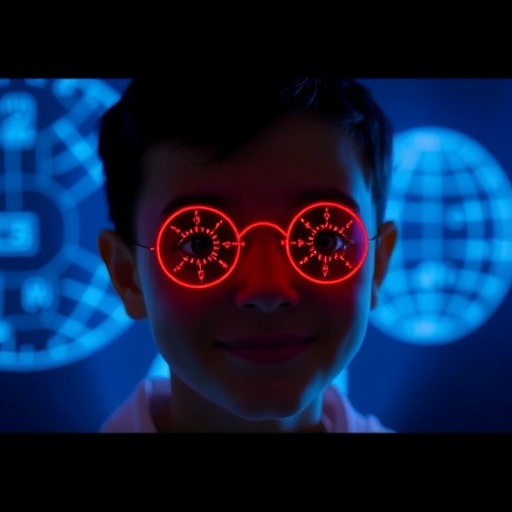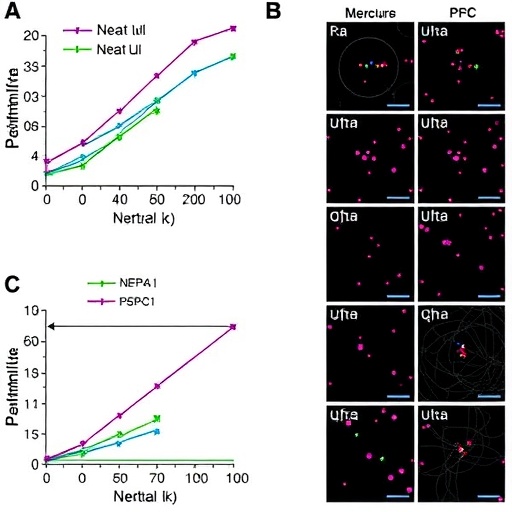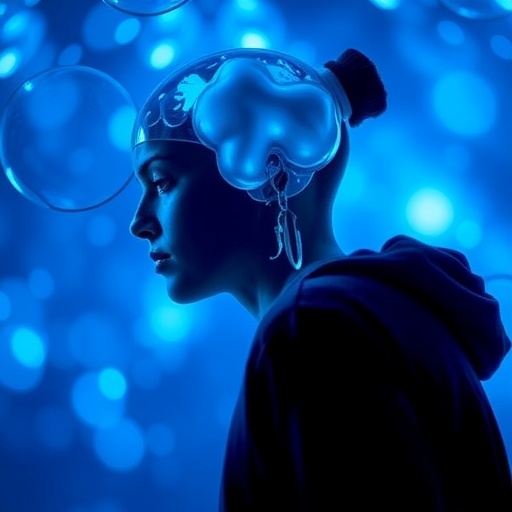Philadelphia, July 30, 2025 – A groundbreaking study conducted by researchers at the Children’s Hospital of Philadelphia (CHOP) has unveiled promising advances in diagnosing concussion-related vision disorders using innovative eye-tracking technology. These disorders, often under-recognized and persisting well beyond the acute phase of concussion, significantly impact pediatric patients who suffer from prolonged post-concussive symptoms lasting over 28 days. Published recently in the Journal of Sport and Health Science, this research highlights the potential for objective infrared eye tracking to revolutionize the identification and treatment planning for these complex visual disturbances.
Concussion remains a prevalent injury among children and adolescents, with nearly two million cases reported annually in the United States alone. While symptoms typically resolve within four weeks, approximately 30% of young patients experience persistent post-concussive symptoms, which include a constellation of issues such as headaches, cognitive impairments, and critically, vision disruptions. These vision problems often go undiagnosed during standard concussion evaluations despite their significant contribution to functional impairments in daily activities, including academic performance and physical exercise.
Traditionally, the detection of concussion-induced vision disorders has relied on clinical visio-vestibular examinations (VVE). This composite assessment involves brief, targeted tasks designed to evaluate ocular motility, convergence, saccadic eye movements, and vestibular function, aiming to identify deficits that stem from brain injury. While VVEs offer valuable clinical insight, their subjective nature sometimes limits their sensitivity, underscoring the need for adjunctive, objective tools capable of enhancing diagnostic accuracy.
.adsslot_bo86k1rXpE{ width:728px !important; height:90px !important; }
@media (max-width:1199px) { .adsslot_bo86k1rXpE{ width:468px !important; height:60px !important; } }
@media (max-width:767px) { .adsslot_bo86k1rXpE{ width:320px !important; height:50px !important; } }
ADVERTISEMENT
In this context, the novel utilization of infrared eye-tracking devices offers an exciting pathway forward. The eye-tracking system employed in the study, known as EyeBOX, continuously monitors gaze position and eye motion across visual stimuli cycles. By quantifying nuanced disruptions in eye movement patterns, the device provides an objective, quantifiable metric—the BOX score—that correlates strongly with concussion-related visual dysfunction. This objective approach addresses previous challenges of inconsistent clinical appraisal and enables clinicians to stratify risk and refer patients more effectively to specialized vision care.
The study prospectively enrolled 108 adolescent patients who exhibited concussion symptoms persisting beyond 28 days post-injury. Each participant underwent a battery of assessments, including the VVE, comprehensive ophthalmologic examinations, and EyeBOX testing. Remarkably, 62% of participants were clinically diagnosed with concussion-related vision disorders, the most prevalent being convergence insufficiency. This condition impairs the ability to maintain binocular fixation at near distances, manifesting as double vision and visual fatigue—symptoms that severely disrupt reading, screen time, and other near-vision tasks crucial to everyday functioning.
Statistical analyses of EyeBOX data revealed compelling associations. The average BOX score for patients diagnosed with vision disorders was significantly elevated, suggesting increased instability or irregularity in eye movement patterns linked with concussive injury. Furthermore, each incremental point increase in the BOX score raised the odds of possessing a vision disorder by approximately 15%, highlighting the device’s potential as a predictive biomarker that transcends subjective clinical assessment.
Insights gleaned from this research emphasize the transformative implications of integrating eye-tracking technology into routine concussion management protocols. Eye tracking offers clinicians a rapid, non-invasive, and precisely quantifiable tool capable of identifying subtle dysfunctions that might otherwise be missed. As Dr. Christina L. Master, senior author and co-director of CHOP’s Minds Matter Concussion Program, stresses, early and accurate diagnosis through such objective means facilitates timely referrals and initiation of specialized rehabilitation—critical steps toward mitigating long-term disability among pediatric concussion patients.
The convergence of clinical expertise and technological innovation embodied in this study underscores a paradigm shift in concussion care. Where assessment was once hampered by subjective variability and limited access to specialized vision services, now objective metrics pave the way for more equitable and accurate diagnoses. This advance holds particular promise for improving prognostic outcomes by tailoring individualized treatment interventions to those who truly need them.
Moreover, the implications extend beyond clinical practice to public health domains where pediatric concussion presents substantial challenges. With millions of children affected annually and a significant proportion developing chronic symptoms, scalable and efficient diagnostic methodologies such as eye tracking are invaluable. They offer the possibility of widespread screening and monitoring, particularly in settings such as schools, sports organizations, and primary care, where early recognition remains critical.
The study was notably supported by the National Institute of Neurological Disorders and Stroke, reflecting its scientific rigor and the strategic priority of advancing neurological injury management. Funded research of this caliber offers hope for refined clinical pathways that ultimately reduce the burden of post-concussive sequelae, particularly visual disturbances that have long eluded timely recognition and treatment.
Beyond the clinical and technological triumphs, this research reinforces the importance of multidisciplinary collaboration in addressing complex brain injuries. By harnessing ophthalmological expertise, neurology, biomechanics, and cutting-edge sensor technology, the field moves closer to a holistic understanding of concussion pathophysiology and optimizes patient-centered care models tailored to the nuanced needs of pediatric populations.
In conclusion, the utilization of objective infrared eye tracking represents a landmark development in the diagnosis of concussion-related vision disorders among children and adolescents with persistent symptoms. This empirical advancement not only augments the precision of clinical examinations but also heralds a new era of data-driven, individualized concussion management. As ongoing research further validates these findings, eye tracking may soon become a standardized component of concussion protocols, transforming outcomes for thousands of young patients grappling with the enduring impacts of brain injury.
Subject of Research: People
Article Title: Metrics of concussion-related vision disorders among children and adolescents with persisting post-concussive symptoms using an objective eye tracking device
News Publication Date: 30-Jul-2025
Web References:
– Children’s Hospital of Philadelphia: https://www.chop.edu
– Journal of Sport and Health Science article: https://www.sciencedirect.com/science/article/pii/S2095254625000377?via%3Dihub
– DOI link: http://dx.doi.org/10.1016/j.jshs.2025.101058
References:
– Master et al., Journal of Health and Sport Sciences, July 15, 2025, DOI: 10.1016/j.jshs.2025.101058
Keywords: Pediatrics, Sports medicine
Tags: children’s health and concussionsclinical visio-vestibular examinationsconcussion-related vision disorderseye tracking technology in medicineidentifying concussion impacts on visioninfrared eye tracking advancementsinnovative diagnosis methods for concussionsJournal of Sport and Health Science researchongoing effects of concussions in youthpediatric concussion diagnosispost-concussive symptoms in childrenvisual disturbances after concussion





